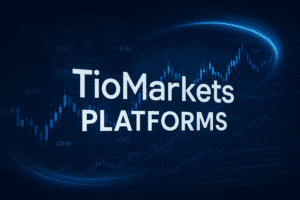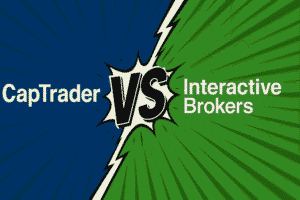If you’re watching the Korean stock market, it can be hard to keep up with what actually drives the KOSPI price and why it changes so often. According to research from KoreaScience, understanding how economic factors like consumer prices and interest rates affect the KOSPI can help investors make smarter decisions, and the Korea Composite Stock Price Index (KOSPI) is tracked every day by major banks and investment firms.

The KOSPI price represents the overall value of South Korea’s main stock market, showing how much the largest public companies in the country are worth in total. I find following the KOSPI useful for measuring market trends and deciding when to trade or invest, since changes in the index often reflect shifts in the economy and investor confidence.
Being aware of what impacts the KOSPI price—such as performance of big businesses and economic signals—helps me avoid common mistakes in trading and gives me ideas for making better choices for my investments. For those new to KOSPI, getting a clear picture of how it works is an important first step in understanding the Korean stock market.
Key Takeaways
- The KOSPI price shows the total value of major Korean companies.
- Economic changes and market trends impact KOSPI movement.
- It helps investors make informed trading decisions.
Understanding KOSPI Price
The value of the KOSPI price is shaped by how Korean stocks trade, their total market cap in KRW, and changes in economic factors like interest rates. The KOSPI Composite Index helps investors understand how the overall market is performing each day.
What Is the KOSPI Composite Index
The KOSPI Composite Index measures the performance of all common stocks listed on the Korea Exchange. It tracks companies across many sectors, from large conglomerates to smaller firms. The index is quoted in Korean won (KRW) and helps investors gauge the health of South Korea’s equity market.
First introduced in 1983, the KOSPI set its base value at 100 points. This base allowed comparisons to measure growth or decline. Many analysts and market makers use the index to shape trading strategies, including those who focus on financial instruments and mutual funds.
KOSPI’s wide coverage makes it a good way for investors to check if stocks in South Korea are generally rising or falling. I often check KOSPI when I want a quick look at how the Korean stock market is doing.
How KOSPI Price Is Calculated
The KOSPI price is calculated using a market cap-weighted formula. This means that each company’s impact on the index depends on its market capitalization, or the total value of its listed shares in KRW.
The formula takes the current total market cap of all included stocks and divides it by the market cap at the base date set in 1980. The result is then multiplied by 100, keeping the base value consistent. Here’s a simple version of the formula:
| Step | Description |
|---|---|
| Find value | Add up market cap of listed companies |
| Divide | By base date market cap |
| Multiply | By 100 (to set base value) |
Stocks with bigger market caps move the KOSPI price more than smaller ones. As large stocks like Samsung or Hyundai change in value, the KOSPI reflects these shifts clearly.
Key Factors Influencing KOSPI Price
Several factors influence KOSPI price movements. Changes in consumer prices and interest rates are some of the strongest forces. If inflation rises or interest rates go up, I often see the KOSPI react quickly as investors adjust their holdings in stocks versus other types of financial instruments and cryptocurrencies.
Company earnings, global market trends, and currency values against major currencies also have a strong impact. Research shows that the Consumer Price Index (CPI) and government bond yields are closely linked to KOSPI’s changes.
Trading activity by mutual funds and foreign investors, as well as government actions, can also change the index price fast. When these traders buy or sell, the shift in demand makes large moves in the market cap and the overall index.
Comparing KOSPI to Other Stock Market Indices
The KOSPI is similar to other major stock indices, but it has some unique features. Like the S&P 500 in the US or the Nikkei in Japan, the KOSPI uses market cap-weighted calculations. However, the KOSPI tracks every listed stock on the Korea Exchange instead of just the largest companies.
A key difference is that markets like the KOSDAQ focus on smaller, tech-driven firms, while KOSPI includes stocks from all industries and sizes.
Market cap weighting means the largest companies determine much of the index’s movement, similar to other global benchmarks. The KOSPI’s wide scope, simple structure, and daily impact on Korean financial markets make it a vital part of the investing landscape in South Korea.
Trading and Investment Implications of KOSPI Price

KOSPI price plays an important role for traders and investors who monitor South Korea’s markets. I use KOSPI data to guide my investment decisions, manage risk, and stay updated on market moves.
Investment Objectives and Risk Appetite
When I look at the KOSPI price, I first think about my investment objectives. If I want steady growth, I may invest in a broad range of KOSPI-listed companies. If I prefer higher returns and accept more risk, I might focus on volatile KOSPI sectors.
Understanding my risk appetite is key. A conservative investor might avoid sudden changes in the KOSPI, while an aggressive investor may look for sharp price moves to capture gains. The KOSPI’s movement reflects the mood of institutional investors, funds, and retail traders, so it gives clues about market risk and where money is flowing.
For big financial decisions, I always suggest getting professional advice. A financial advisor can help me match my financial goals to the right investment strategy based on the KOSPI’s trends and behavior.
Using KOSPI Price for Trading Purposes
As a trader, I watch the KOSPI price to spot trends and practice different strategies. Short-term traders try to profit from daily price changes using futures, options, or ETFs tied to the index. These financial instruments allow me to act on my market views quickly.
Market makers and institutional traders check the KOSPI to decide when to buy or sell large amounts of shares without moving the market too much. For active strategies, I watch for price movements tied to key news, earnings, or shifts in global economics.
Risk management is important for any trading strategy. I use stop-loss orders, position sizing, and regular reviews to limit my risks. Because sudden market swings can cause big losses, I adjust my strategies if the KOSPI price acts unexpectedly.
Accessing KOSPI Price Data and Research
Access to timely and accurate KOSPI price data is important for my analysis. I use platforms that deliver live quotes, charts, and historical data. Many brokerage apps and financial news sites offer real-time KOSPI updates and research reports. These reports include expert analysis, market sentiment, and forecasts.
If I want in-depth insight, I read research papers comparing trading costs or studies about trading performance. For example, knowing that trading data is broken down by investor type helps me spot patterns among retail and institutional investors.
I also rely on investment tools and financial research—some are free, while others may require subscriptions, like Amazon’s Kindle Store or professional market data vendors.
Implications for Intellectual Property Rights
Whenever I use or share KOSPI price data, I remember that most data is owned by stock exchanges, data vendors, or research companies. This means I must respect their intellectual property rights and follow copyright rules set out by each provider.
For example, I may use the data for my own trading or research, but I avoid redistributing large sets of price data without clear approval. Published research reports and analysis usually have clear copyright notices, and I make sure to credit the creators and avoid plagiarism.
If I want to publish my own research using raw KOSPI price data, I check the data provider’s policies. Often, special permission is required for commercial or public use, to avoid violating any intellectual property rules.
Frequently Asked Questions
I often get asked about the technical details behind the KOSPI indexes, how investors can access these markets, and how the KOSPI compares to other well-known indexes. People are also interested in regulations, trading times, and the structure of the different KOSPI indexes.
The KOSPI 200 Index is made up of 200 blue-chip companies listed on the Korea Exchange. These are chosen based on their market capitalization, liquidity, and industry representation. Only common stocks are included, and companies with low trading volumes are excluded to keep the index both relevant and tradable.
I can invest in the KOSPI by buying Exchange-Traded Funds (ETFs) that track the index. These ETFs trade on stock exchanges just like ordinary shares, allowing for real-time trading. Many international brokerages offer access to KOSPI ETFs, making it easy to gain exposure without buying individual Korean stocks.
The KOSPI measures the performance of companies listed on the Korea Exchange, mostly large South Korean firms. The Hang Seng index, by contrast, tracks the largest companies listed in Hong Kong. This means each index reflects different economies and sectors, with the KOSPI focused on South Korea and the Hang Seng on Hong Kong and some Chinese companies.
KOSPI futures allow investors to speculate on or hedge against future movements in the KOSPI index. These contracts are traded on the Korea Exchange and are standardized for easier market access. Most trading uses margin, which means I only need to deposit part of the contract value to open a position. To learn more, I can check this study on KOSPI 200 futures market performance.
The main trading session for the KOSPI usually runs from 9:00 a.m. to 3:30 p.m. Korea Standard Time (KST). There are also pre-market and after-hours sessions for some securities. Knowing these times helps me plan trades around major news or market events.
The KOSPI 50 Index only includes the 50 largest and most liquid stocks from the KOSPI 200. This makes the KOSPI 50 more focused on the highest market capitalization companies in Korea. The KOSPI 200, while still emphasizing liquidity and size, represents a broader selection of the market.



![SGX Nifty Signals Powerful Market Trend for Indian Investors [2025]](https://invest-hub.com/wp-content/uploads/2025/06/Leonardo_Phoenix_10_updatedpromptA_digital_illustration_of_a_f_0-300x170.jpg)
![Which STI ETF Is Better? Expert Comparison and Insights [2025]](https://invest-hub.com/wp-content/uploads/2025/06/Leonardo_Phoenix_10_A_splitscreen_financial_infographic_compar_0-300x170.jpg)
